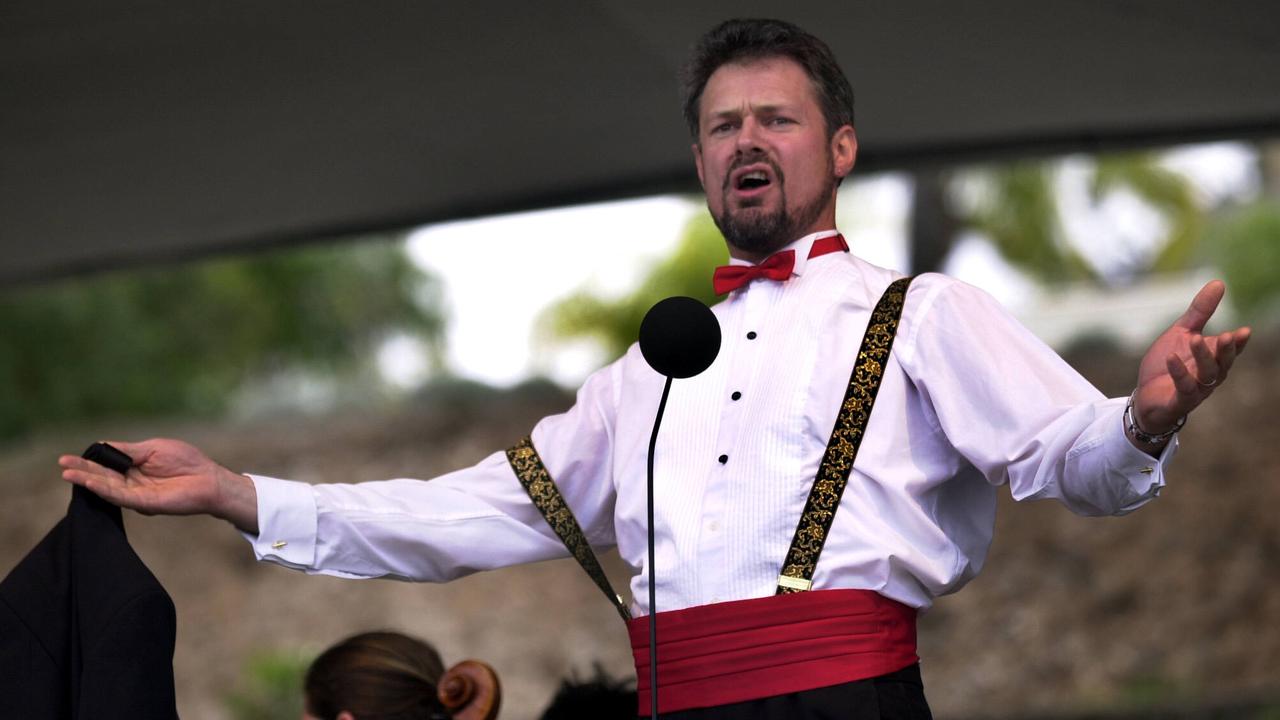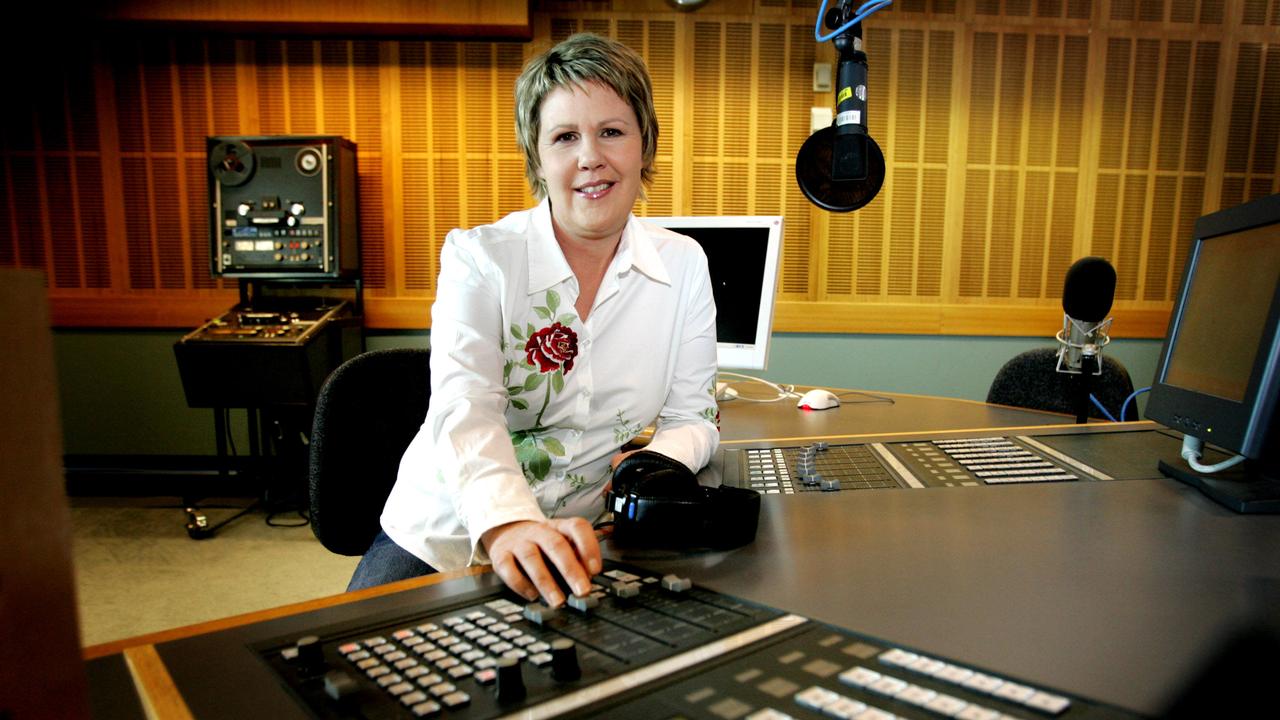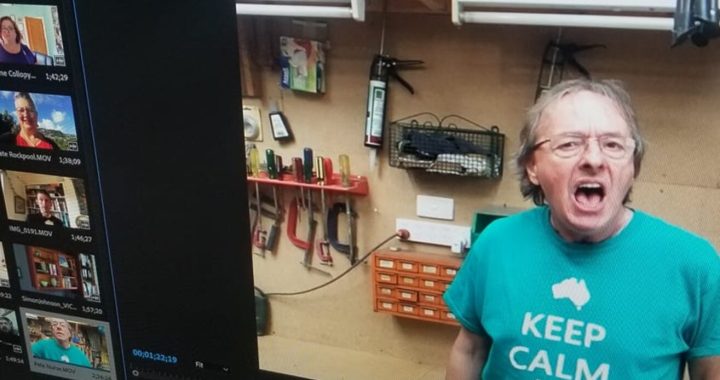Recently I was among hundreds who signed up to the Facebook group Laudate In The Lounge to be a tiny square in a massive online virtual choral production.
Pre COVID-19, the place to indulge in singing at home was typically the bathroom and shower. The resonant, forgiving bathroom acoustics and amplification could turn you into a Placido Domingo or Maria Callas, at least in your own mind.
With coronavirus locking us indoors, singers have migrated from the bathroom to their living rooms, kitchens, backyards and patios and onto cameras and the internet, in magnificently stitched together online video choral epics, with hundreds and sometimes thousands taking part.
Couch Choir, the lockdown adaptation of Brisbane’s Pub Choir community singing events, the Melbourne Symphony Orchestra Chorus’s beautifully sung Be Still My Soul, a magnificent choral video of Finlandia by more than 1000 voices to mark that country’s National Veteran’s Day, and 900 singers in a Singapore rendition of “Home” are examples.
The world in isolation has found a new hobby.
These choirs are collectively showing their extended middle finger to the virus, that while everyone is separated physically, the world can come together and killjoy coronavirus won’t be singing the final chords in this pandemic battle.
Members and past members of university choral societies around Australia are the latest to do this.
The combined choirs of The Laudate in The Lounge choral event was the brainchild of Pete Nurse, a choral singer in the 1970s. The event brought together more than 350 singers spanning 50 years of these singing societies.
Tech journo Chris Griffith joins a 300-strong virtual choir for “Laudate in the Lounge” & looks at tech used for grand…
For choirs to get together physically remains a very dangerous activity, as evident from the superspreader event in early March at a rehearsal of the Skagit Valley Chorale in Washington state, US.
According to The LA Times, the choir’s leaders had debated whether to proceed amid Washington state’s COVID-19 outbreak. They went ahead, provided hand sanitiser and asked the choir to abstain from physical contact. Everyone brought their own sheet music.
Those safeguards didn’t stop 45 of 60 who attended contracting COVID-19, with two choristers dying. A combination of singers forcefully projecting contaminated droplets together with deep breathing while singing for more than two hours made for a perfect spreader event.
“You are using your lungs, throat, mouth to produce sound and more respiratory droplets are released than just talking,” says Australian virologist Professor Peter White from UNSW.
“This will certainly help the virus to transmit, if infected, as these droplets carry the virus. It’s very difficult to mitigate this risk and wearing masks doesn’t work well for choirs.”
The German government has taken this issue seriously, restoring church services after six weeks, but laying down conditions which include no singing. The government clashed with elements of the Catholic Church which saw these conditions as violating religious freedoms.
For now, virtual choirs provide a safe alternative.
The aim of Laudate in The Lounge was to produce an online choral version of Laudate Nomen Domini, a 16th century anthem by English composer Christopher Tye, and the movement’s signature tune.
Nurse says Easter and the prospects of hundreds of singers locked down at home presented the ideal opportunity to hatch the project and he published a Facebook group to attract participants.
The response was overwhelming. “We got 940 people,” he says.
In the weeks ahead, the Facebook page was flooded with old photos, video greetings and chatter between choristers who often hadn’t seen each other in decades – in some cases for 50 years. A reunion on this scale had never occurred before the pandemic.
The Facebook page was also the platform for organising the virtual choir which was more complicated than you think. You can’t make virtual choral recordings in real time by getting everyone together on a Zoom call. Sound ends up seconds out of synchronisation over the internet. You have to take another approach.
“It’s absolutely critical in music to get the tempo correct and mucking around with Zoom is never going to do it,” says Nurse.
His approach was to post a video of four soloists singing Laudate for singers to download. Choristers then put on headphones and videod themselves singing along to those voices. (There was no conductor).
Nurse says he received 350 videos from singers.
The next step was editing. Combining hundreds of submitted videos can be a nightmare. You can use video editing software such as Adobe Premiere or Final Cut Pro X to edit the clips yourself. However, you are better off with professional support for a large scale mass production.
Nurse chose experts to handle video and audio. Both had a background in the choral movement.
Andrew Maj, a member of Melbourne University Choral Society in the 80s, edited the vision.
Since university days Maj has worked as a professional producer and writer of comedy. Later he formed his own production company and editing video is a mainstay.
He couldn’t edit 350 videos on 350 tracks, so he created videos of the singers in groups of 4, 10, and 16 and combined these to create the final product. This took him two to three weeks.
The audio was mixed separately by opera singer Lucas de Jong, a chorister who later sung with Opera Australia, state based opera companies and the Royal Opera House, Covent Garden. He also is a conductor and eisteddfod judge.
de Jong picked the best 50 voices as the core of the audio and blended in the others to produce a soundtrack of 350. “You’ll mostly hear the best 50,” he says.
Nurse meanwhile used the project to raise funds for Foodbank Australia.
The Australian Intervarsity Choral Societies Association brings together choristers who rehearse, perform, network, socialise and party.
Most are undergraduates, typically in their late teens and early twenties. Some have magnificent voices, some people’s voices blend well, while others can barely sing. It doesn’t matter.
Many are Christians – unsurprising given the choral masses and other religious works sung, but people join from different religious and ethnic backgrounds. All love singing, the choral ambience, the connections and opportunities offered.
For me, this was a return to a hobby I pursued decades ago. I was in the Monash University choir from 1971 to about 1975, beginning at just 17. The choir gave me grounding, I sang, networked, developed friends and contacts, gained entrepreneurial skills such as organising and promoting concerts.

I sang in four-part harmony groups, sang folk rock music, and was in large scale concerts at The Sydney Opera House, The Adelaide Festival Theatre, events in Melbourne, Perth, Hobart, at the MCG in a choir on AFL grand final day, and with a Carols by Candlelight choir in Melbourne. (My voice is average.)
I had an utterly unforgettable year in the The Victorian Opera Company chorus under much loved conductor Richard Divall, later Principal Resident Conductor of Opera Australia, taking part in VOC productions starring iconic singers such as celebrated Australian tenor Ronald Dowd and coloratura soprano June Bronhill. Such was the journey you could follow.
While for me it was a hobby, for others, the choral societies were the genesis of professional careers in the arts – in opera, on stage, in musicals, in arts administration, and in music and video production.
Some choristers ended up in the media, such as Victoria Laurie, this paper’s excellent Perth-based feature writer and a friend with whom I sang in choirs almost 50 years ago.
ABC hosts Fran Kelly and Geraldine Doogue were in the movement too.
Kelly says she sang with choirs at Adelaide and Flinders universities. “It was a really dynamic, exciting and fun time,” she tells The Australian. “We were lucky in Adelaide to have a large core of dedicated, committed, talented, professional and entrepreneurial singers. There was always something going on and plenty of concerts being planned.
“We sang together, lived together and played together.”

Doogue sang with the Perth Undergraduate Choral Society. “One of my most formative experiences was singing in massed choirs, at university,” she says. “I was doing an Arts degree, majoring in history. I made the firmest of friends there who sustain me today and simply adored singing. Unforgettable, seriously.”
Tim Matthies, who sang with the Sydney University Choral Society in the 1980s and 1990s, worked with Musica Viva Australia for 26 years and is now Director of Artistic Planning at the Queensland Symphony Orchestra. He attributes his career to those choral origins.
Of choral societies he says: “You learn how to perform, you learn how to communicate, you learn how to work with others … it helps you learn how to be with people.”
Published in The Australian.
